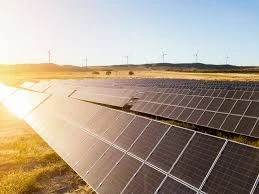what does a solar inverter do
What Does a Solar Inverter Do?
In the world of renewable energy, solar power stands out as one of the most promising and widely adopted sources of clean energy. While solar panels are often the stars of the show, converting sunlight into electricity, there is another critical component that deserves attention the solar inverter. But what exactly does a solar inverter do, and why is it so important in a solar energy system?
The Role of a Solar Inverter
At its core, a solar inverter is an electrical device that converts the direct current (DC) electricity generated by solar panels into alternating current (AC) electricity. AC electricity is the standard form used in homes and businesses, making the inverter a crucial link between the solar energy system and everyday electrical appliances.
Understanding DC and AC Electricity
To comprehend the importance of solar inverters, it is essential to understand the difference between DC and AC electricity. Solar panels generate electricity in the form of DC, which flows in one direction. On the other hand, AC electricity oscillates and can easily be transmitted over long distances, making it the preferred format for home and grid use. Without an inverter to convert DC to AC, the energy produced by solar panels would be unusable for most household appliances.
Types of Solar Inverters
There are several types of solar inverters, each designed to meet different needs and preferences. The three main types are
1. String Inverters These are the most common type of solar inverters. They connect a series of solar panels (a string) to a single inverter. While string inverters are cost-effective and reliable, their performance can be affected by shading on any one of the panels in the string.
what does a solar inverter do

2. Microinverters Unlike string inverters, microinverters are installed on each individual solar panel. This technology allows for independent operation, meaning that if one panel is shaded or malfunctioning, it won’t significantly affect the performance of the others. Microinverters can maximize energy production but are generally more expensive than string inverters.
3. Power Optimizers These devices are similar to microinverters but are used in conjunction with string inverters. Power optimizers are attached to each panel and help manage its output, ensuring that performance is maximized. The DC electricity from the panels is still sent to a string inverter for conversion to AC.
Additional Functions of Solar Inverters
Beyond the primary role of converting DC to AC, solar inverters come with additional features that enhance their functionality and the overall efficiency of a solar power system
- Monitoring Systems Many solar inverters are equipped with monitoring capabilities that allow homeowners to track performance over time. This includes data on energy production, efficiency, and system health, enabling users to identify and address issues promptly.
- Grid Interaction Inverters also facilitate the connection between solar energy systems and the electrical grid. They help manage the flow of electricity, ensuring that excess energy can be sent back to the grid, often in exchange for credits or compensation—commonly referred to as net metering.
- Safety Features Solar inverters are designed with safety in mind. They include features that disconnect the solar system from the grid in emergencies, such as during power outages, preventing potential hazards.
Conclusion
In summary, a solar inverter is a vital component of a solar energy system, playing a pivotal role in converting the electricity generated by solar panels into a form that can be used in homes and businesses. With various types of inverters available, each with its pros and cons, selecting the right one for your specific needs can significantly impact the overall efficiency and performance of your solar setup. By understanding what a solar inverter does, consumers can make informed decisions that contribute to both economic savings and environmental sustainability. Whether you are considering installing solar panels or are looking to optimize your current system, recognizing the importance of the inverter will help you harness the full potential of solar energy.
-
Unlocking Energy Freedom with the Off Grid Solar InverterNewsJun.06,2025
-
Unlock More Solar Power with a High-Efficiency Bifacial Solar PanelNewsJun.06,2025
-
Power Your Future with High-Efficiency Monocrystalline Solar PanelsNewsJun.06,2025
-
Next-Gen Solar Power Starts with Micro Solar InvertersNewsJun.06,2025
-
Harnessing Peak Efficiency with the On Grid Solar InverterNewsJun.06,2025
-
Discover Unmatched Efficiency with the Latest String Solar InverterNewsJun.06,2025







